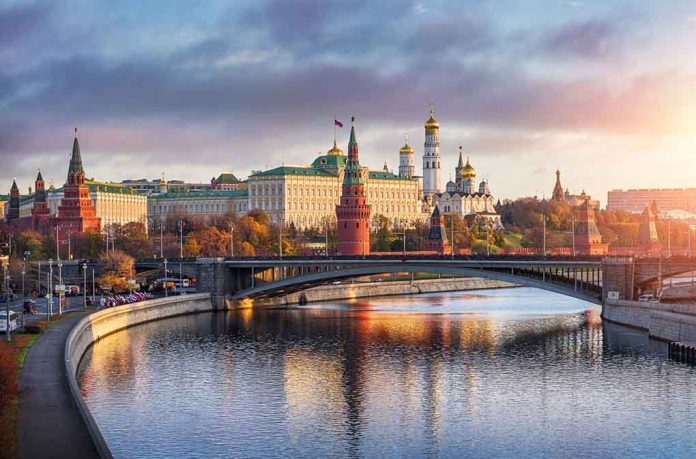
At a Glance
- Russia conducts inspections and repairs of bomb shelters amid geopolitical tensions.
- Models featured in the campaign normalize evacuation shelters as luxurious refuges.
- Efforts to upgrade Soviet-era shelters began after the 2022 invasion of Ukraine.
- Public concern over the militarization of society grows alongside these refurbishments.
The Kremlin’s Fashionable Shelter Initiative
Amidst rising international tensions, the Kremlin has launched a striking campaign to advertise newly refurbished bomb shelters. By featuring models confidently entering these shelters as if they were luxury retreats, the initiative blends crisis preparedness with high fashion. This attempt to normalize and glamorize emergency shelters aims to downplay the severity of seeking refuge during geopolitical crises.
The campaign seeks to address the Kremlin’s recent focus on upgrading Soviet-era bomb shelters, many of which have fallen into disrepair since the collapse of the Soviet Union. “A decision to inspect the network of bomb shelters was made by the government in the spring,” said one Russian official. Local authorities, including those in Krasnodar, Nizhny Novgorod, and Ryazan, are investing heavily in these upgrades.
Addressing the Deterioration
Many bomb shelters have been virtually ignored for decades but are now receiving urgent attention due to the ongoing war in Ukraine. The upgrades signify a broader militarization in Russian society, which includes mobilization of men for the Armed Forces and the installation of air-defense systems in Moscow.
Local authorities are promptly acting on orders from Moscow to inspect and repair these shelters. “An order was given from Moscow to carry out this work everywhere—inspection and repair,” said the official, who requested anonymity due to the sensitivity of the topic. Local governments are also posting numerous tenders for necessary equipment, including ventilation, air filters, and waterproofing.
Wider Implications and Public Reception
Given the effort to upgrade shelters, public concern over the militarization of Russian society is mounting. Some cities like Kazan are even considering using metro systems as bomb shelters due to the poor condition of existing ones. Fears of nuclear conflict have also surged following President Putin’s order placing nuclear forces on high alert.
Local authorities have been downplaying the upgrades to avoid causing panic, referring to the shelters with euphemisms like “deep lodgings.” They have also been installing signs directing people to these shelters, which has only added to the public’s unease.
Potential Motivations Behind the Upgrades
Experts speculate various motivations behind the Kremlin’s shelter upgrades. While some argue the moves are necessary precautions, others suspect the primary goal may be to allocate government funds to well-connected contractors. “The main point of the upgrade may be to obtain Russian government money for the probably well-connected contractors who win the bids to undertake the bomb shelter upgrades,” noted Mark N. Katz, a professor at George Mason University’s Schar School of Policy and Government.
The refurbishments began in February 2022, shortly after Russia invaded Ukraine, and demand has risen substantially. Local authorities have been allocating vast sums, amounting to hundreds of millions of rubles, to ensure these shelters can support the population if necessary.
Sources:
Amid Ukraine War, Kremlin Orders Nationwide Bomb Shelter Overhaul
Kremlin Upgrading Russia’s Bomb Shelters Amid Fear of Attack: Report
Russia’s Secretly Splurging on Bomb Shelters ‘Everywhere,’ Report Says
Warsaw coughs up €30M for bomb shelters with eye on aggressive Putin
Kremlin to Build Bomb Shelter in Elite Moscow Hospital













